 |
 |
 |
| |
(ACTG) Long-term Bone Mineral Density Changes in Antiretroviral-treated
HIV-Infected Individuals, Bone Loss Continues--Though Slowly--After First 96 Weeks of ART
|
| |
| |
CD4 & Viral Load Matter - "In the first 96 weeks, higher pretreatment CD4 count independently predicted rising spine BMD, while higher pretreatment viral load independently predicted falling BMD in the spine and hip. Every 50-cell higher pretreatment CD4 count boosted spine BMD 0.20% yearly (95% CI 0.06 to 0.34, P = 0.005)"......"After 96 weeks every 1-kg higher total lean body mass was associated with a 0.05% greater spine BMD yearly (95% CI 0.03 to 0.08, P < 0.001) and with a 0.06% greater hip BMD yearly (95% CI 0.03 to 0.09, P < 0.001)."

IAS 2015, July 19-22, 2015, Vancouver
Mark Mascolini
Loss of bone mineral density (BMD) slowed significantly after the first 96 weeks of antiretroviral therapy (ART) in an AIDS Clinical Trials Group (ACTG) analysis [1]. But bone loss did continue through 7 years and proved significantly greater at the lumber spine in people on ART than in an HIV-negative comparison group.
Accelerated bone loss in people with HIV contributes to the approximately 60% higher fracture rate in HIV groups than in the general population, noted ACTG investigators who conducted this study. BMD can drop a 2% to 6% in the first 2 years of ART, but less is known about subsequent bone loss, especially when compared with HIV-negative populations.
To assess long-term bone loss and risk in people on multiyear ART, ACTG investigators conducted study A5318, which involved one follow-up site-specific DXA scan in antiretroviral-treated people initially scanned in ACTG A5202/A5224s. In those trials people took atazanavir/ritonavir or efavirenz plus tenofovir/emtricitabine (TDF/FTC) or abacavir/lamivudine (ABC/3TC). The analysis excluded people who ever used bisphosphonates, teriparatide, denosumab, tamoxifen, or raloxifene. The ACTG team compared these people with general-population men in the Boston Area Community Health/Bone (BACH/Bone) Survey and with HIV-negative women in the Women's Interagency HIV Study (WIHS).
The researchers assessed percentage of BMD change in HIV-negative people and HIV-positive people (1) in the first 96 weeks of follow-up and (2) from 96 weeks to the end of follow-up. The analysis involved 97 people taking antiretrovirals and 614 HIV-negative controls. Median age at first DXA was 40 in the HIV group and 46 in the control group (P < 0.001), a higher proportion of people with HIV was white (47% versus 35%) and a lower proportion Hispanic (14% versus 31%); about one third were black in both groups. Compared with controls, people with HIV had lower body mass index at their first DXA (24 versus 28 kg/m2) and their final DXA (27 versus 29 kg/m2) (P < 0.001 for both comparisons). HIV patients took TDF for a median of 5.8 years and took a protease inhibitor for a median of 3.7 years.
Median follow-up from first to final DXA measured 7.6 years in the HIV group and 6.9 years in HIV-negative controls (P < 0.001). From the first to final DXA, lumbar spine BMD dropped an average 1.01% yearly in the HIV group and rose an average 0.04% yearly in controls. In the first 96 weeks spine BMD fell significantly more yearly in the HIV group than the control group (-1.05%, P < 0.001). That difference slowed in subsequent weeks, but the yearly decline remained significantly greater in the HIV group (-0.31%, P = 0.012).
Total hip BMD from first to final DXA dropped 1.56% yearly in the HIV group versus 0.31% yearly in HIV-negative controls. In the first 96 weeks the yearly rate of change in hip BMD was significantly greater in the HIV group (-1.25%, P < 0.001). In the following weeks, however, yearly rate of change in total hip BMD did not differ significantly between the HIV group and controls (0.00%, P = 0.99).
In people with HIV, the ACTG team used multivariate analyses to assess risk factors for hip and spine BMD change in the first 96 weeks of ART and in later weeks. In the first 96 weeks, higher pretreatment CD4 count independently predicted rising spine BMD, while higher pretreatment viral load independently predicted falling BMD in the spine and hip. Every 50-cell higher pretreatment CD4 count boosted spine BMD 0.20% yearly (95% CI 0.06 to 0.34, P = 0.005). In the first 96 weeks of treatment, being randomized to TDF/FTC versus ABC/3TC independently lowered both spine and hip BMD 0.87% yearly (95% CI -1.64 to -0.10, P = 0.028). Randomization to atazanavir/ritonavir versus efavirenz did not affect yearly change in hip or spine BMD in the first 96 weeks or afterwards.
After 96 weeks every 1-kg higher total lean body mass was associated with a 0.05% greater spine BMD yearly (95% CI 0.03 to 0.08, P < 0.001) and with a 0.06% greater hip BMD yearly (95% CI 0.03 to 0.09, P < 0.001). Baseline lean body mass and body mass index were not associated with changing BMD. Age, sex, and race were not associated with BMD change in the first 96 weeks of treatment or afterwards.
The ACTG team concluded that "BMD continues to decline with time at both the lumbar spine and total hip, but at significantly slower rate, after the first 96 weeks of ART." CD4 findings suggested to the investigators that starting ART at a higher CD4 count could preserve bone health. And the lean body mass results suggested that weight-bearing exercise could prevent further bone loss. But ACTG researchers believe more prospective studies are needed to confirm these implications.
Reference
1. Grant P, Kitch D, McComsey G, et al. Long-term bone mineral density changes in antiretroviral-treated HIV-infected individuals. IAS 2015. 8th Conference on HIV Pathogenesis, Treatment and Prevention. July 19-22, 2015. Vancouver. Abstract TUPDB0103.
-------------------

Long-term Bone Mineral Density Changes in Antiretroviral-treated HIV-Infected Individuals
Reported by Jules Levin
Philip Grant1, Douglas Kitch2, Grace McComsey3, Ann Collier4, Susan L. Koletar5, Kristine Erlandson6, Michael Yin7, Benedetta Bartali8, Belinda Ha9, Kathy Melbourne10,Todd Brown11
1Stanford University, Stanford, CA; 2Harvard T.H. Chan School of Public Health, Boston, MA; 3Case Western Reserve University, Cleveland, OH; 4University of Washington, Seattle, WA; 5Ohio State University, Columbus, OH; 6University of Colorado, Denver, CO; 7Columbia University, New York, NY; 8New England Research Institute, Watertown, MA; 9Viiv Healthcare, Research Triangle, NC; 10Gilead Sciences, Foster City, CA; 11Johns Hopkins University, Baltimore, MA


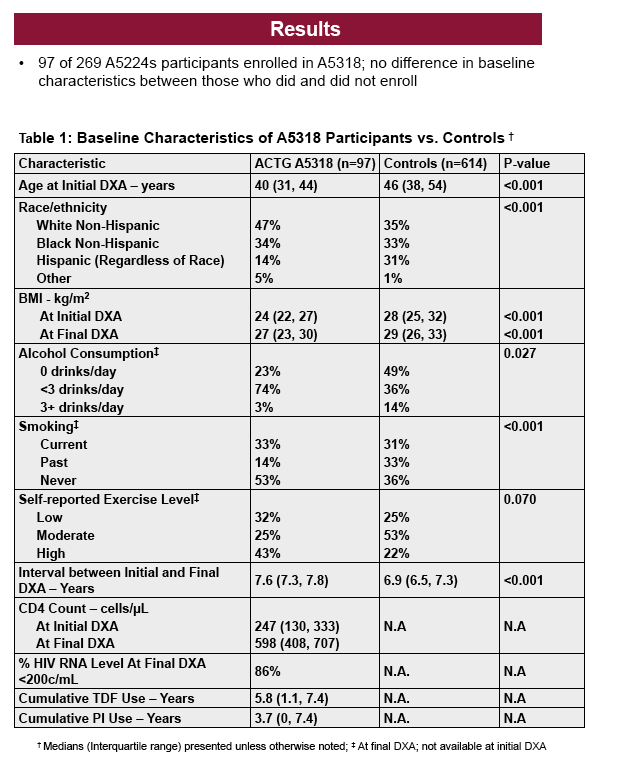
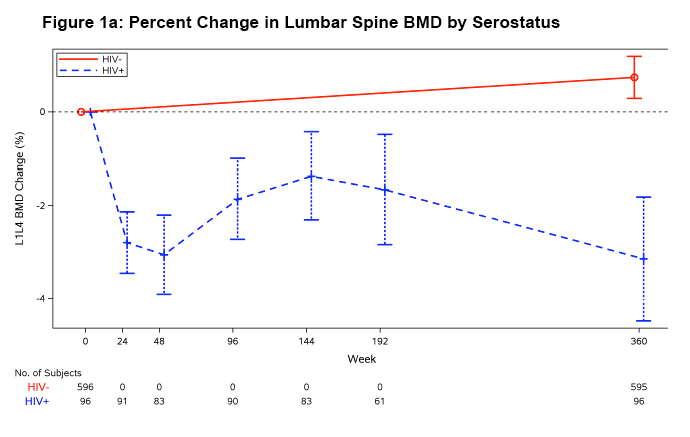
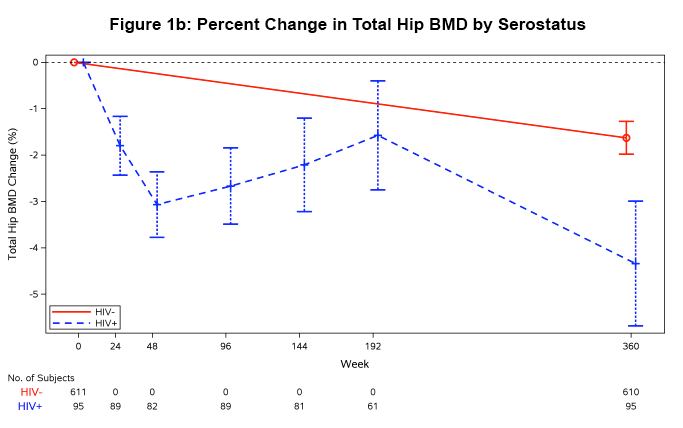
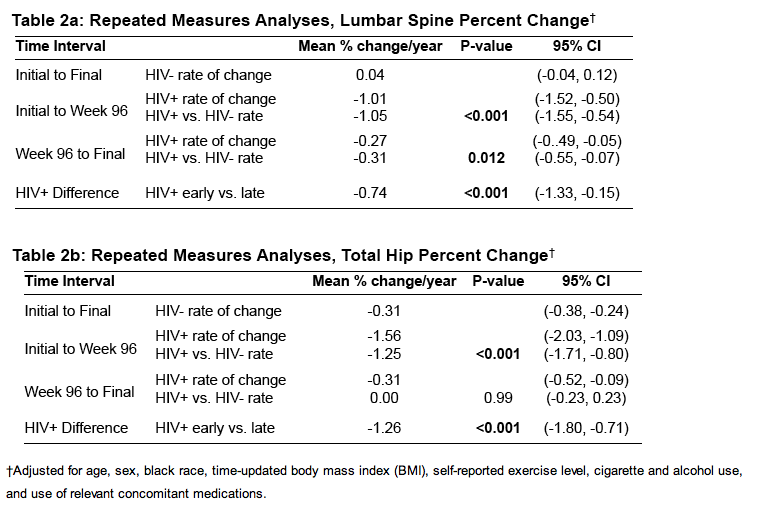
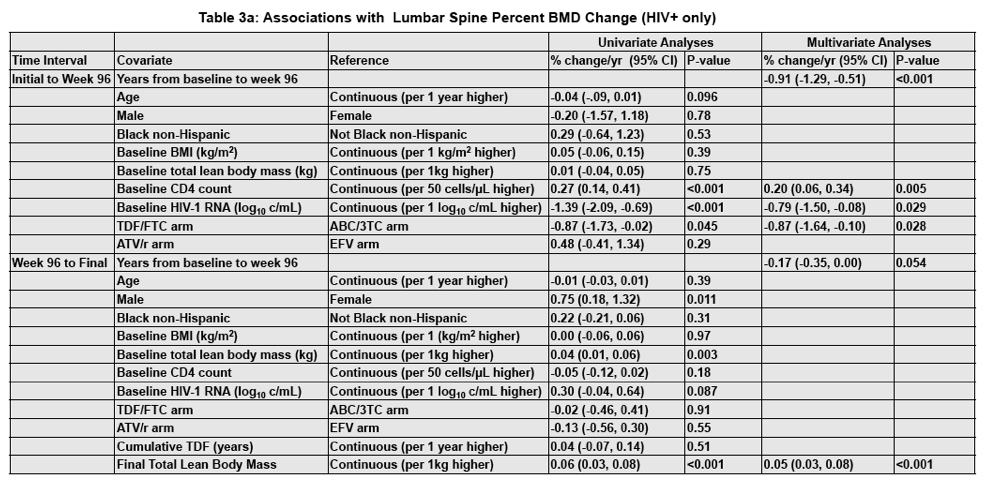
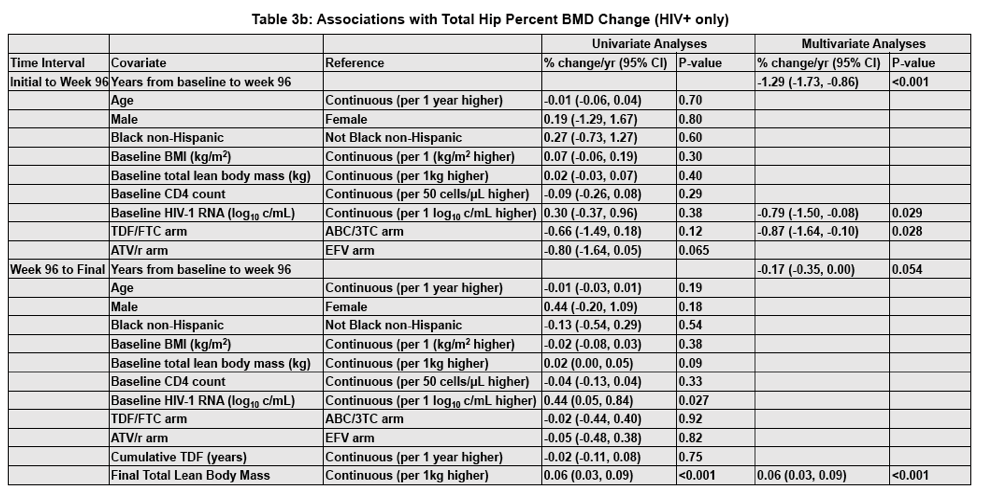
|
| |
|
 |
 |
|
|